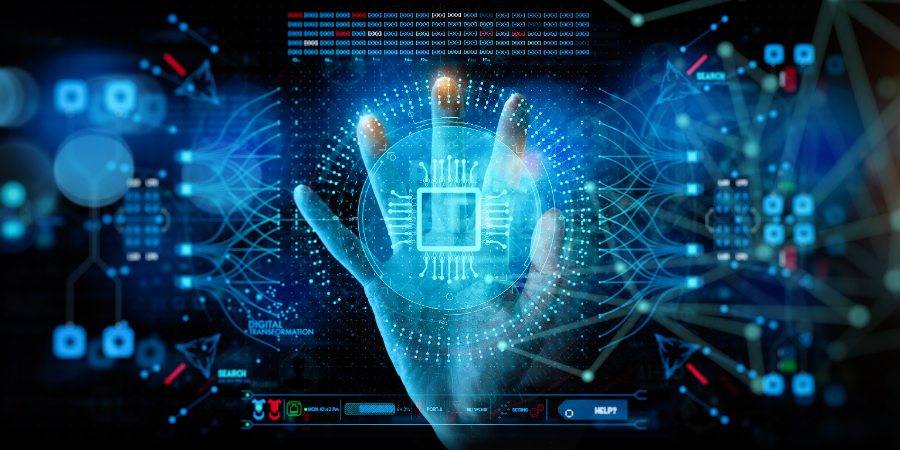Personalization
AI allows organizations to tailor their offerings to the specific needs and preferences of each user.
One of the main advances in this field is the use of machine learning algorithms and data analysis to collect information about users and their online behavior.
With this information, custom software development services can create detailed profiles, including interests, browsing behaviors and purchasing patterns. These profiles can be used to personalize the experience in real time, offering recommendations for relevant products, content and services.
Additionally, AI is also driving the automation of personalization processes. For example, chatbots and virtual assistants use natural language processing algorithms to understand user needs and provide personalized responses to offer fast and efficient customer service.
Companies that have implemented AI-based personalization
These are just a few examples of how AI is driving personalization in a variety of industries such as custom software development services through machine learning.
1. Amazon: Collects behavioral data to provide product recommendations and personalized suggestions.
2. Netflix: Uses data about the titles a user has watched and the ratings they have given to offer personalized recommendations.
3. Spotify: Customize playlists. It applies data about the genres and artists a user listens to frequently to offer suggestions for songs they’re likely to like.
4. Sephora: Uses behavioral data to offer product and service recommendations based on specific needs and preferences.
5. Hilton: Use data about guest preferences, such as room temperature and food and beverage tastes, to offer a more personalized experience.
6. Coca-Cola: Uses AI-based personalization in its Coca-Cola Freestyle smart vending machine that allows customers to create their own personalized drink.
User experience and customer loyalty
Below are some of the ways AI is positively impacting these areas:
- Personalized user experience through real-time data collection and analysis making brand interaction more relevant and meaningful.
- Automation of customer service with chatbots and virtual assistants. These systems can resolve problems quickly and efficiently, reducing time spent waiting in line or on the phone.
- Improved customer retention and reduced churn by identifying behavioral patterns, allowing you to proactively intervene before the user leaves.
- Improved product recommendation with machine learning-based systems, which can increase the likelihood of the user making a purchase and therefore improve loyalty.
Automation
AI enables intelligent automation of repetitive and high-workload tasks, increasing productivity.
For example, AI-based automation systems can automate time-consuming tasks, such as invoice processing or inventory management. This improves the efficiency and accuracy of business processes and reduces the time and costs associated with performing manual tasks.
Additionally, workflow can be optimized and downtime reduced in production and product delivery.
How to automate processes with AI
Below are the general steps to automate a process using AI:
- Identify the appropriate processes to automate, that are repetitive and high workload.
- Analyze the process to understand how it works and determine how it can be automated.
This may include creating a flowchart or process map to visualize the process and determine entry and exit points.
- Select the right AI tool.
- Train the AI model, which may require collecting data and creating training sets.
- Integrate the AI tool into the process, which may require creating application programming interfaces (APIs) and integrating with existing systems.
- Test and debug AI automation to ensure it works correctly and without errors.
- Implement automation with AI.
- Monitor and optimize AI automation on a regular basis. This may include identifying efficiency improvements and implementing changes to improve automation.
Analysis of data
It refers to the use of machine learning algorithms to analyze large data sets and discover hidden patterns and relationships.
Some examples of how AI is used for data analysis are: classification of data into different categories, sentiment analysis on user reactions to a product or service, detection of anomalies in large data sets to detect fraud in financial transactions or factory equipment failures and prediction based on historical data.
Voice interactions
AI voice interactions refer to the ability of users to interact with artificial intelligence systems using voice commands and spoken dialogues instead of traditional graphical user interfaces.
Here are some examples of how AI voice interactions are used:
- Virtual assistants that can interact with users to answer questions, perform tasks, and provide information.
- Home automation such as Google Home or Amazon Echo that allow users to control their homes.
- Call centers provide assistance to customers.
- Navigation such as GPS systems that can provide directions and guide users.
- Voice transcription of speech to text.

